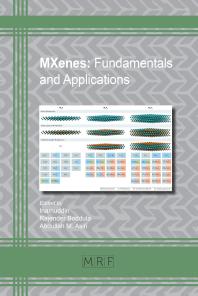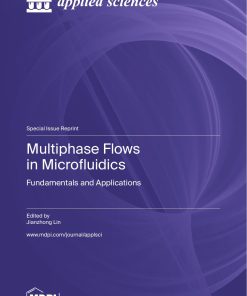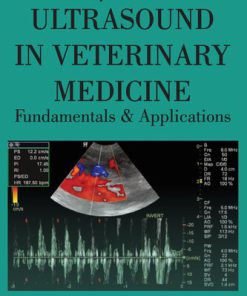Chemical Nanofluids in Enhanced Oil Recovery Fundamentals and Applications 1st Edition by Rahul Saha, Pankaj Tiwari, Ramgopal Uppaluri ISBN 9780367425241 0367425246
$50.00 Original price was: $50.00.$25.00Current price is: $25.00.
Chemical Nanofluids in Enhanced Oil Recovery Fundamentals and Applications 1st Edition by Rahul Saha, Pankaj Tiwari, Ramgopal Uppaluri – Ebook PDF Instant Download/Delivery: 9780367425241 ,0367425246
Full download Chemical Nanofluids in Enhanced Oil Recovery Fundamentals and Applications 1st Edition after payment

Product details:
ISBN 10: 0367425246
ISBN 13: 9780367425241
Author: Rahul Saha, Pankaj Tiwari, Ramgopal Uppaluri
Chemical Nanofluids in Enhanced Oil Recovery Fundamentals and Applications 1st Edition Table of contents:
1 Introduction to Chemical and Nanofluids-Induced Oil Recovery
1.1 Importance of Crude Oil
1.2 Crude Oil – Demand and Supply
1.3 Enhanced and Improved Oil Recovery
1.3.1 Thermal-Enhanced Oil Recovery
1.3.2 Gas-Enhanced Oil Recovery
1.3.3 Chemical-Enhanced Oil Recovery
1.4 Chemical-Enhanced Oil Recovery Mechanisms
1.4.1 Capillary Number
1.4.2 Interfacial Tension (IFT)
1.4.3 Emulsification
1.4.4 Displacement Efficiency
1.4.5 Mobility Ratio
1.4.6 Wettability Alteration
1.5 Selection Criteria for EOR and Chemical EOR Processes
1.6 Overview of Chemical and Chemical-Nanofluid EOR
1.7 Complexities and Literature Lacuna for Chemical and Chemical-Nanofluid EOR
References
2 Alkali Flooding – Mechanisms Investigation
2.1 Introduction to Alkali Flooding
2.2 IFT between Crude Oil and Alkaline Solution
2.3 Alkali Flooding in Sandpack
2.3.1 Alkali Concentration on Oil Recovery
2.3.2 Extent of Emulsification and Size Distribution of Droplets
2.3.3 Slug Size on Residual Oil Recovery
2.3.4 Injection Pattern on Oil Recovery
2.3.5 Alkali Injection Rate for Oil Recovery
2.4 Neutralization and Saponification of Crude Oil
2.5 Wettability Alteration of Reservoir Rock
2.6 Overall Factors Deciding Oil Recovery
2.7 Conclusions
References
3 Alkali and Surfactant Flooding
3.1 Introduction to Alkali-Surfactant Flooding
3.2 Selection of Alkali Based on IFT
3.2.1 IFT between Crude Oil and Different Alkalis
3.2.2 Temperature and Salinity Effect on Alkali–Crude IFT
3.3 Selection of Surfactants Based on IFT
3.3.1 IFT between Crude Oil and Different Surfactants
3.3.2 Synergy of Emulsification and IFT
3.3.3 Thermal Stability of Surfactants
3.4 Formulation of Optimal Surfactant Composition
3.4.1 Dynamic IFT of Combined Surfactants
3.4.2 Influence of Temperature and Salinity on the Optimum Surfactant Composition
3.4.3 Adsorption Behaviour of Optimum Surfactant Composition
3.5 IFT between Alkali–Surfactant Combinations
3.6 Wettability Alteration with Different Chemicals
3.7 Berea Core Flooding for Oil Recovery
3.8 Conclusions
References
4 Surfactant Adsorption Characteristics on Reservoir Rock
4.1 Introduction
4.2 Characterization of Rock Samples
4.3 Interfacial Tension between Crude Oil and Surfactant
4.3.1 IFT Behaviour Using Different Surfactants
4.3.2 IFT Behaviour with Formation Water
4.4 Thermal Stability of Surfactants
4.4.1 IFT of Aged and Non-Aged Surfactant Samples
4.5 Adsorption Isotherms
4.5.1 Adsorption Kinetic Models
4.6 Influence of Salinity and Temperature on Adsorption Capacity
4.7 Adsorption Thermodynamic Parameters
4.8 Role of Rock Minerals on Adsorption Quantity
4.9 Conclusions
References
5 Nanofluid Flooding for Oil Recovery
5.1 Introduction to Nanofluid Flooding
5.2 Methods to Evaluate Nanofluid Stability
5.3 Influence of Nanofluid on Rheological Properties
5.4 Influence of Nanofluid on Interfacial Tension
5.5 Effect of Nanofluid on Emulsion Properties
5.5.1 Nanofluid for Emulsion Stability
5.5.2 Nanofluid for Creaming Index
5.5.3 Nanofluid for Emulsion Viscosity
5.6 Influence of Nanofluid on Wettability Alteration
5.7 Nanofluid Flooding for Oil Recovery
5.8 Identification of Nanoparticles in Emulsion and Rock Surfaces
5.9 Nanofluid Field Projects and Technical Challenges
5.10 Conclusions
References
6 Problems and Challenges in Chemical EOR
6.1 Introduction
6.2 Limitations of Chemical EOR
6.2.1 Precipitation and Scaling
6.2.2 Formation Damage
6.2.3 Produced Emulsion Treatment
6.2.4 Chemical Separation
6.2.5 Water Disposal Treatment and Facility Problems
6.2.6 Challenges in Offshore Oil Field
6.2.7 Cost of Chemicals
6.3 Case Studies on Challenges of Chemical EOR
6.4 Technical Solutions for Chemical EOR
6.5 Chemical EOR Laboratory and Pilot-Scale Studies
6.5.1 ASP Flooding in China
6.5.2 ASP Flooding in the United States
6.5.3 ASP Flooding in Canada
6.5.4 ASP Flooding in India
References
7 Application of Nanotechnology in Unconventional Reservoirs
7.1 Introduction
7.2 Hydraulic Fracturing Fluid
7.3 Limitations of Hydraulic Fracturing Fluid
7.4 Nanotechnology in Unconventional Reservoirs
7.4.1 Nanoparticles for Hydraulic Fracturing
7.4.1.1 Nanoparticles in a Polymer-Based Fracturing Fluid
7.4.1.2 Nanoparticles in a Surfactant-Based Fracturing Fluid
7.4.1.3 Nanoparticles in a Foam-Based Fracturing Fluid
7.4.2 Nanoparticles Impact on a Proppant
7.4.3 Nanoparticles as a Fluid Loss Control Agent
7.4.4 Nanoparticles in Sensors
7.4.5 Nanoparticles in Unconventional Gas Reservoirs
7.5 Field Applications and Challenges in Unconventional Reservoirs
References
Index
People also search for Chemical Nanofluids in Enhanced Oil Recovery Fundamentals and Applications 1st Edition:
enhanced oil recovery methods
enhanced oil recovery using nanoparticles
chemical nanoengineering
nanofluid enhanced oil recovery
enhanced oil recovery methods are necessary because
Tags: Rahul Saha, Pankaj Tiwari, Ramgopal Uppaluri, Chemical Nanofluids, Enhanced Oil, Recovery
You may also like…
Engineering - Electrical & Electronic Engineering
Fundamentals of Logic Design, Enhanced Edition Jr. Charles H. Roth
Uncategorized
Computers - Programming
Engineering - Bioengineering
Engineering - Environmental
Engineering - Environmental
Medicine - Veterinary Medicine
Ultrasound in Veterinary Medicine Fundamentals and Applications J. P. Varshney











